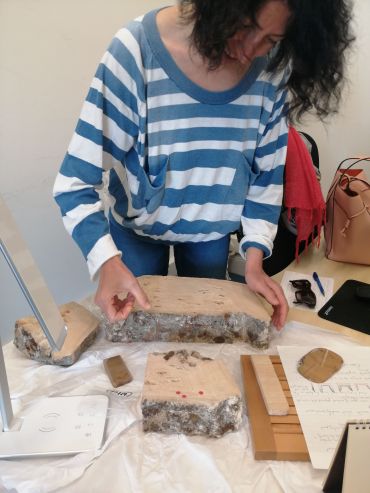What did the Romans do for us? Aqueducts and the art of Roman water management
Wednesday 2nd Aug 2023, 12.20pm
According to the research, published in Science Advances, ancient water management traces are captured in the limescale deposits which built up on the walls and floor of the ancient Roman aqueduct of Divona (Cahors, France).
Ancient water management traces are captured in the limescale deposits which built up on the walls and floor of the ancient Roman aqueduct of Divona
The evidence shows that these deposits were regularly and partially removed during maintenance. It reveals, ‘The discovery of traces of regular maintenance in the carbonate deposits… such as tool marks, calcite deformation twins, debris from cleaning and repairs…are proof of periodic manual carbonate removal by Roman maintenance teams.’
The paper explains how, over decades, deposits could become many centimetres thick, clogging the aqueduct channel – if they were not cleaned out. According to the research, this was done every one to five years. It was carried out ‘rapidly and never in summer’ – as recommended by Roman author Sextus Julius Frontinus (AD 40–103). He wrote the only known treatise about maintenance of aqueducts when he was supervisor (curator) of the waterworks of the city of Rome.
 Dr Surmelihindi and Divona evidence.
Dr Surmelihindi and Divona evidence.
‘At the start, we did not know what we were really looking for…this happens with discoveries: good and bad surprises…However, we think each aqueduct’s carbonate research from each ancient city has its own micro-story in the grander story of Roman life, waiting to be revealed,’ maintained Dr Sürmelihindi.
Archaeological evidence suggests that the Divona aqueduct operated between the beginning of the 1st century AD until the 4th or the early 5th century AD. Regular maintenance continued, albeit less frequently, until the last years of the aqueduct.
The paper states, ‘We analysed stable oxygen isotopes to determine the seasonal (cyclic) temperature variation of water in the aqueduct, and used this profile to count the layers, recording 88 years of aqueduct activity. The position of the unconformities in this isotope profile showed that the time intervals between cleaning were 1–5 years, with a mean of 2.8 years, suggesting a regular cleaning regime.
‘The shape of the oxygen isotope profile showed that each cleaning was done in a short time, probably less than one month, and that this cleaning was done in spring, autumn, or winter, but never in summer.
As well as throwing light on water management practiced by the Romans, the team maintains that work on the aqueduct can help to reveal something about the local economy and political stability. Perhaps, worryingly, they say, ‘Regular maintenance can be taken as evidence for a well-structured organisation of an ancient town, while less regular maintenance…indicates socio-economic stress.’
Research on the aqueducts of Divona and neighbouring aqueducts is ongoing since, the authors suspect, they may give information not only on Roman life in late antiquity but also on the ultimate collapse of society in southern France due to political and environmental reasons.

